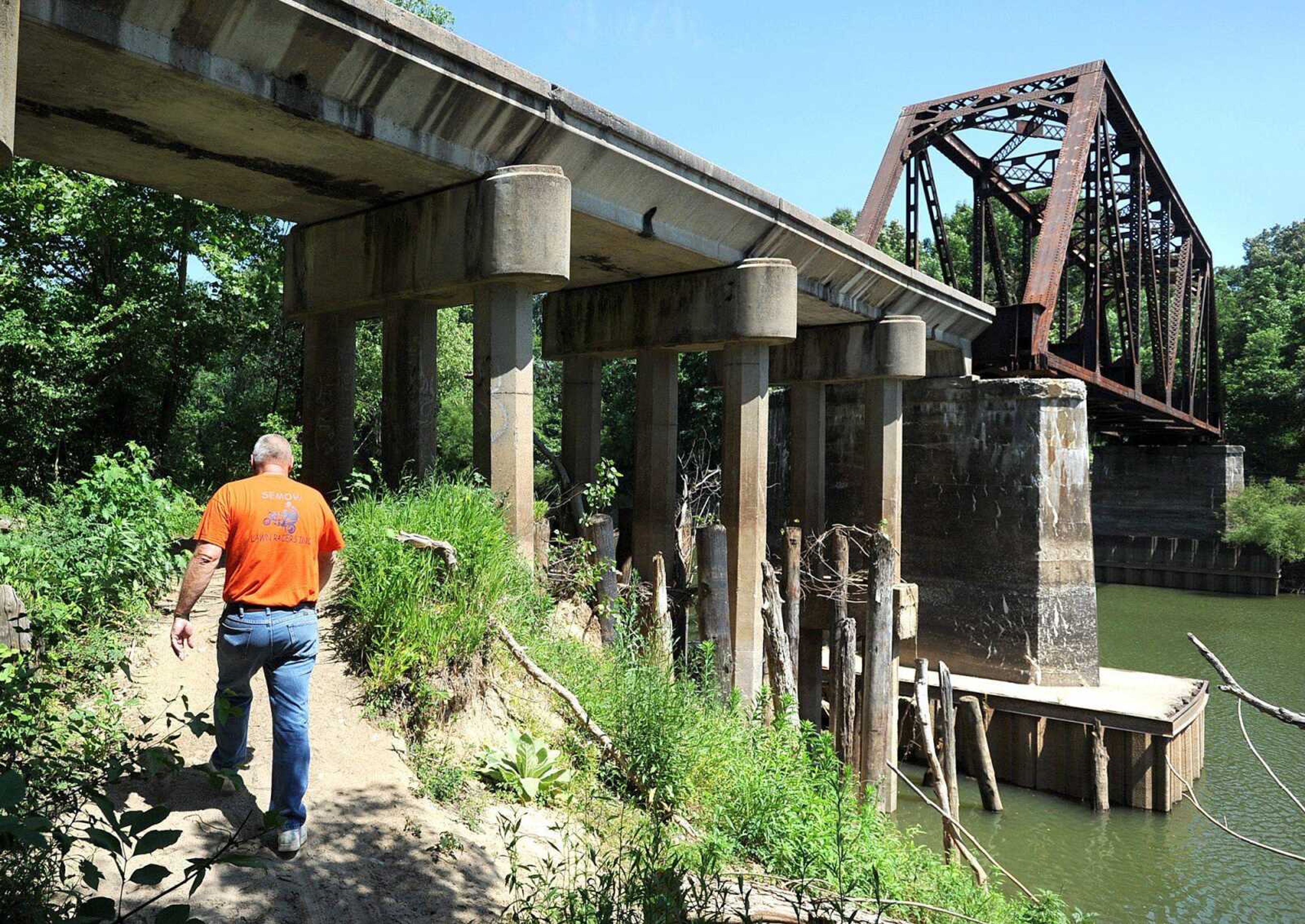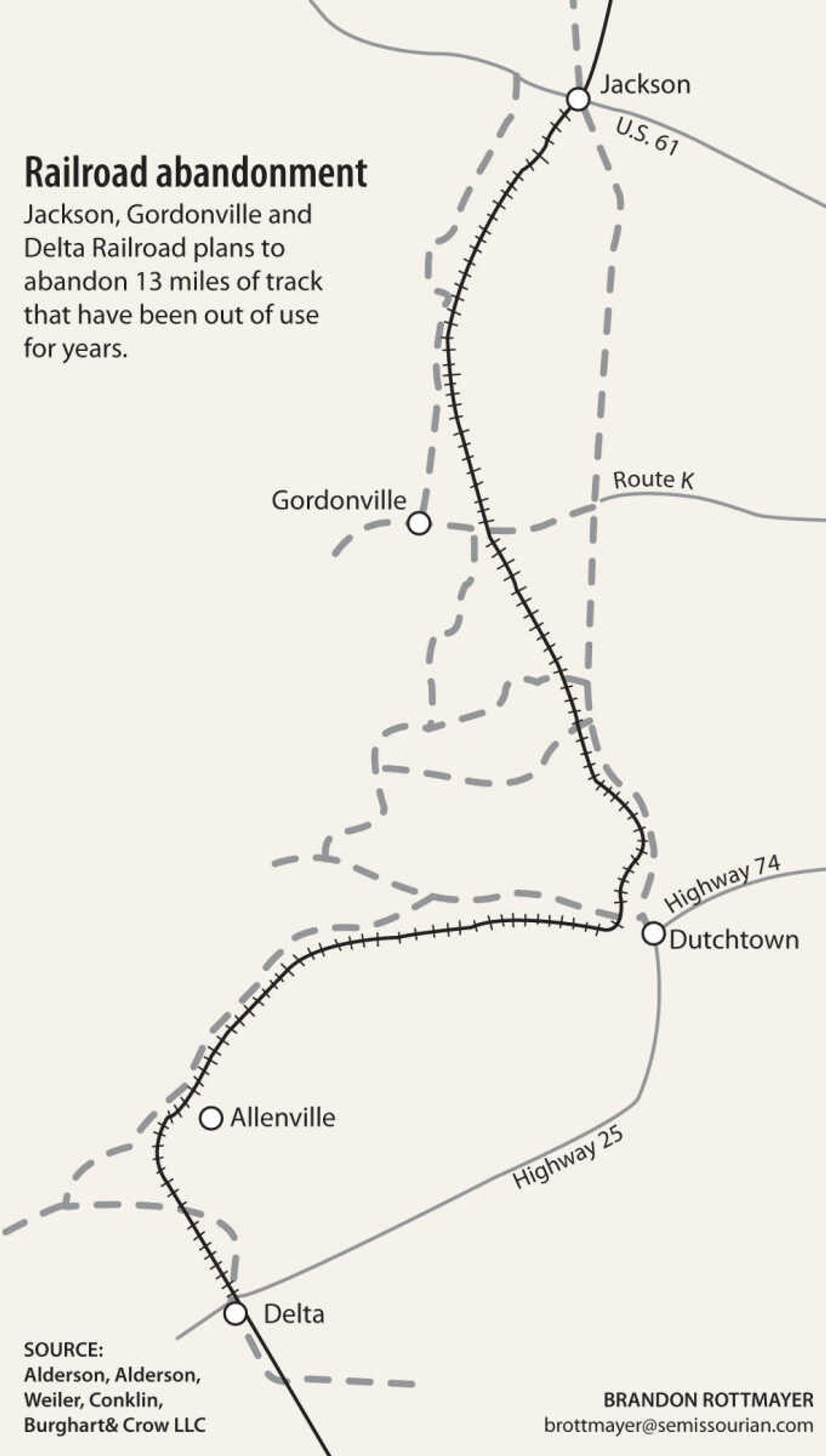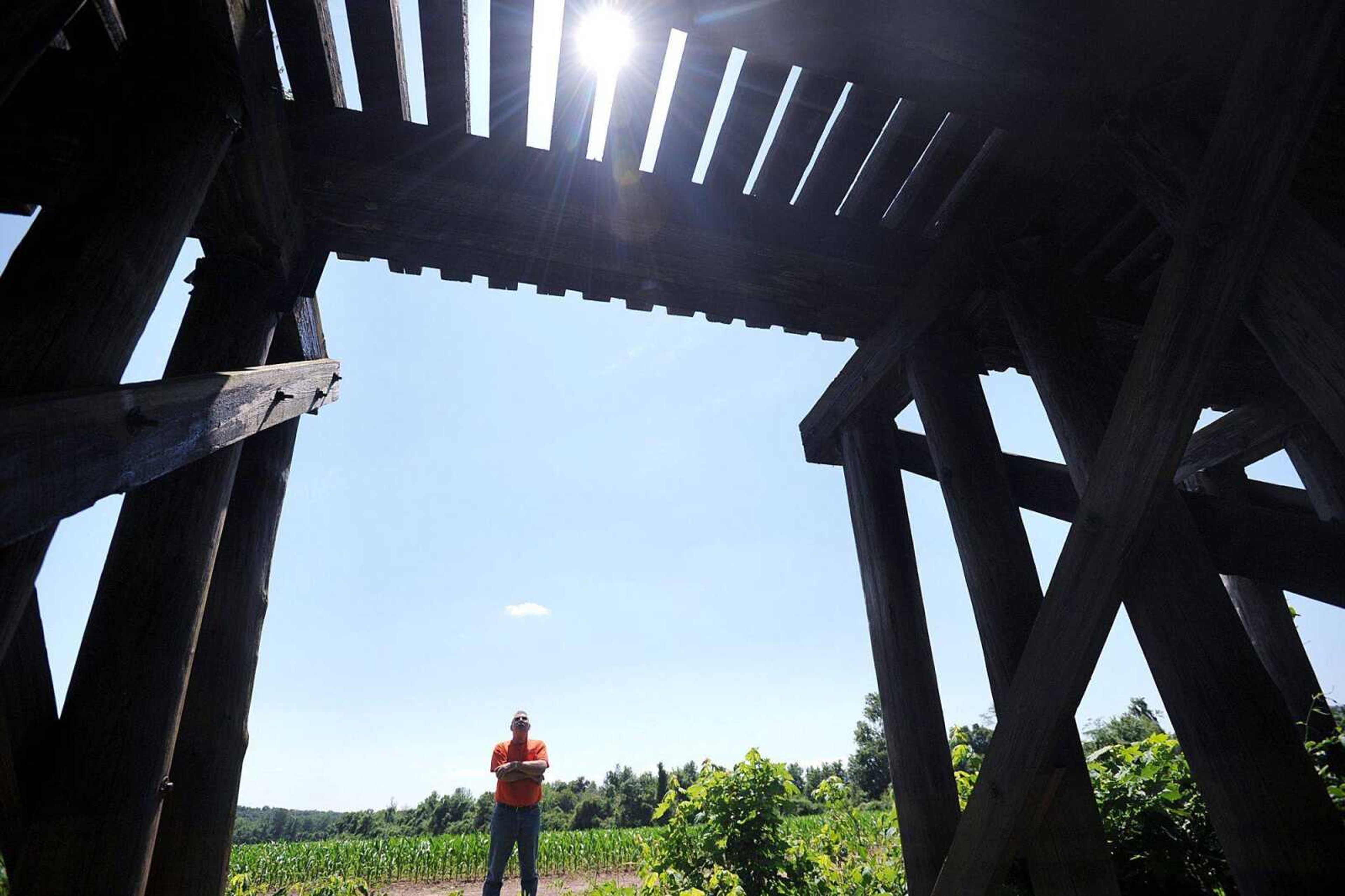Some Allenville residents worried about potential railroad abandonment
The Jackson, Gordonville and Delta Railroad is planning to abandon a 13-mile section of unused tracks and some Allenville residents are worried they will be left without an emergency flood escape route once the railbed is removed. The section of railway between Gordonville and Delta has not been used since 1997 and is in a dangerous state of disrepair in some sections, according to company president Robert L. ...
The Jackson, Gordonville and Delta Railroad is planning to abandon a 13-mile section of unused tracks, and some Allenville residents are worried they will be left without an emergency flood escape route once the rail bed is removed.
The section of railway between Gordonville and Delta has not been used since 1997 and is in a dangerous state of disrepair in some sections, according to company president Robert L. Adams. At one point, he said, the railroad was approached to resume freight services and it was estimated that it would cost $1 million per mile to put it back in use.
JGD is trying to obtain approval from the U.S. Surface Transportation Board to formally abandon the stretch, which is permissible when a line has been out of service for two years. If allowed, the railroad would remove the rails, ties and other salvageable materials.
But Phil Thompson is concerned that he and others will be stranded if there is a flood should the railroad salvage the steel and wood forming the trestle that bridges the Diversion Channel near his village.
Thompson, a lifelong resident of Allenville, said that there have been 12 floods there since 1973. During flooding in 1993 and again in 1995, he said, there were about six weeks when roads were impassable and the trestle was used as a primary method to transport supplies into and out of the area.

Most recently Allenville was hit by flooding last spring and in spring 2008.
Although boats are an option when water is high, Thompson said using them in emergency situations "scares the daylights" out of many people, who feel more secure walking across the trestle. Hearing that it might be removed makes people nervous, he said.
"It's just a concern with everybody in town," Thompson said.
Cape Girardeau County was approached by JGD to give input on whether there are any historical or environmental reasons why the line, which lies on private land, should be preserved. After county study, the commission approved a formal letter Monday saying no reason was found on those grounds to impede abandonment. Beyond that, the county has no authority to intervene.
The stretch of railway was part of the Iron Mountain Road, organized by the state legislature in 1851 to carry supplies of iron ore from Iron Mountain to the Mississippi River and other areas. It was later reorganized as the St. Louis Iron Mountain & Southern Railway and in 1917 merged with the Missouri Pacific Railroad. In 1984, just more than 18 miles of the line was bought by the Jackson Industrial Development Co., which sold its portion to the Jackson, Gordonville and Delta Railroad Co. in 1993.
Associate Commissioner Jay Purcell said earlier this month that he'd like to investigate the possibility of converting the rail bed into walking and biking areas, similar to the 237-mile Katy Trail, which was also created from abandoned rail lines. However, discussion of the county taking on such a "rails to trails" project was curtailed due to cost and maintenance considerations.
The final decision will lie with the federal Surface Transportation Board, which is expected to have an answer within 50 days of the railroad's May 14 application.
Meanwhile, Adams said Monday that no Allenville residents have contacted JGD. He said that the bridge is in such poor condition that he would advise against anyone walking or driving a vehicle across it, for safety reasons. However, he'd be willing to talk with the village about available options.
"We'll work with Allenville any way we can," Adams said.
The Surface Transportation Board didn't immediately respond to requests for more information made Monday afternoon.
salderman@semissourian.com
388-3648
Pertinent address:
Allenville, MO
Jackson, MO

Delta, MO
Connect with the Southeast Missourian Newsroom:
For corrections to this story or other insights for the editor, click here. To submit a letter to the editor, click here. To learn about the Southeast Missourian’s AI Policy, click here.











